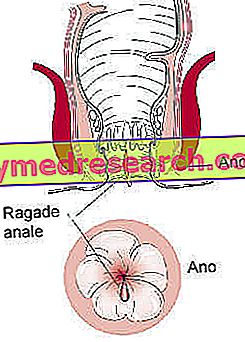Quinolones are synthetic antibacterial chemotherapy drugs derived from 7-chloro-quinoline.

Chinolones - General Chemical Structure
The first quinolone to be marketed and to enter therapy, in 1965, was nalidixic acid (or nalidixic acid).
Classifications of quinolones
Quinolones can be divided into four generations according to the spectrum of action they possess.
First generation quinolones
The action spectrum of these quinolones is limited to some aerobic Gram-negative bacteria. They are rapidly eliminated by the kidneys and metabolized mainly in the liver. They are mainly used to treat urinary tract infections.
They belong to the first generation of quinolones, nalidixic acid and cinoxacin (or cinoxacin).
Second generation quinolones
These quinolones are active against Gram-negative bacteria, also resistant, including Pseudomonas aeruginosa . They also have weak activity against Streptococcus pneumoniae .
They are used to treat urinary tract infections, but are also useful in the treatment of systemic infections.
Some examples of second-generation quinolones are norfloxacin, ciprofloxacin, and oploxacin.
Third generation quinolones
These quinolones are active against infections with Streptococcus pneumoniae and other Gram-positive bacteria. However, they are somewhat less effective in the treatment of Pseudomonas aeruginosa infections.
Examples of third generation quinolones are levofloxacin, sparfloxacin and gatifloxacin.
Fourth generation or last generation quinolones
Fourth-generation quinolones have a remarkable spectrum of action, in fact, they are effective against aerobic and anaerobic, Gram-positive and Gram-negative bacteria.
Examples of the latest generation quinolones are trovafloxacin and gemifloxacin.
Other classifications
Quinolones can also be divided into quinolones (nalidixic acid, oxolinic acid, pyromidic acid, pipemidic acid) and fluoroquinolones (norfloxacin, ciprofloxacin, ofloxacin, pefloxacin, lomefloxacin, sparfloxacin, etc.).
Fluoroquinolones are quinolones which, within their chemical structure, have one or more fluorine atoms.
Many of the quinolones still used today in therapy belong to the group of fluoroquinolones. The introduction of fluorine in the chemical structure of quinolones has allowed to enhance its antimicrobial activity and to widen its action spectrum, so as to make it comparable to that of natural antibiotics obtained by fermentation.
Indications
For what they use
Each quinolone has its own therapeutic indications depending on the generation to which it belongs, therefore, according to its range of action.
In general, we can say that quinolones (including all four generations) are useful in the treatment of:
- Uncomplicated urinary infections;
- Urinary infections sustained by Enterobacter spp., Enterococcus spp. or Pseudomonas aeruginosa ;
- Respiratory tract infections caused by Legionella spp., Chlamydia spp., Mycoplasma spp. and Streptococcus pneumoniae ;
- Skin infections;
- Infections caused by Bacteroides fragilis ;
- prostatitis;
- Upper respiratory tract infections;
- Meningitis;
- Bone infections;
- Endocarditis caused by staphylococci or Pseudomonas ;
- Septicemia;
- Sexually transmitted infections (gonorrhea and chlamydia);
- Chronic ear infections;
- Purulent osteoarthritis;
- Gastrointestinal infections;
- Gynecological infections.
Action mechanism
Quinolones are drugs with a bactericidal action, ie they are able to kill bacterial cells. They perform their action by inhibiting two particular enzymes: DNA gyrase (or bacterial topoisomerase II) and topoisomerase IV .
These enzymes are involved in the supercoiling, rewinding, cutting and welding processes of the two strands that make up the DNA.
With the inhibition of these two enzymes, the bacterial cell can no longer access the information contained in the genes. In this way, all cellular processes (including replication) are interrupted and the beating dies.
Resistance to quinolones
It appears that bacteria can develop resistance to quinolones by exploiting two types of mechanisms:
- Through the spontaneous mutation of genes that code for DNA gyrase; thanks to these mutations the new synthesized DNA gyrases will be resistant to the action of quinolone antibacterials;
- Variations in the permeability of the bacterial cell membrane that lead to a lower entry or greater antibacterial output from the cell itself.
Side effects
Each quinolone can induce various types of side effects.
Among the main adverse effects attributable to quinolone therapy, we recall:
- Convulsive action, especially in patients with pre-existing epilepsy;
- He retched;
- Diarrhea;
- Abdominal pains;
- Loss of appetite;
- Visual disturbances;
- Hallucinations;
- Insomnia.
Generally, the use of quinolones by pregnant women or by breast-feeding mothers is not recommended, due to the possible damage that can occur in the fetus or baby (including metabolic acidosis and hemolytic anemia).



